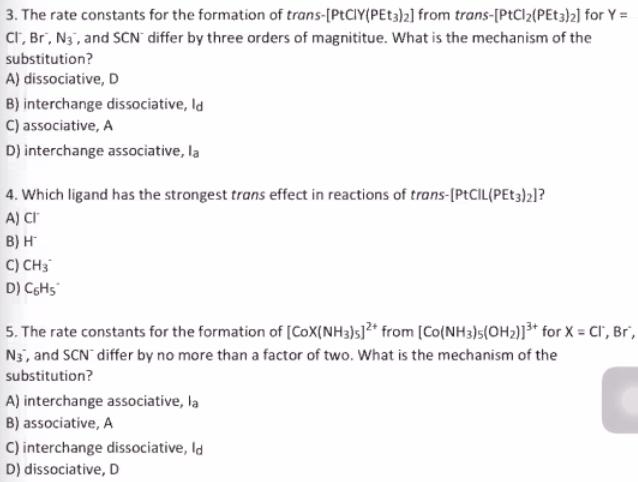Answered step by step
Verified Expert Solution
Question
1 Approved Answer
3. The rate constants for the formation of trans-[PECIY(PET3)2] from trans-[PtCl2{PEta)2] for Y = Ct, Br, N3, and SCN differ by three orders of

3. The rate constants for the formation of trans-[PECIY(PET3)2] from trans-[PtCl2{PEta)2] for Y = Ct, Br, N3, and SCN differ by three orders of magnititue. What is the mechanism of the substitution? A) dissociative, D B) interchange dissociative, ld C) associative, A D) interchange associative, la 4. Which ligand has the strongest trans effect in reactions of trans-[PECIL(PET3)2l? A) Cr B) H C) CH3 D) CSH5 5. The rate constants for the formation of [CoX(NH3)s]?* from [Co(NH3)s(OH2)]* for X = Cr, Br, N3, and SCN differ by no more than a factor of two. What is the mechanism of the substitution? A) interchange associative, la B) associative, A C) interchange dissociative, Id D) dissociative, D
Step by Step Solution
★★★★★
3.50 Rating (160 Votes )
There are 3 Steps involved in it
Step: 1
Answer Step 1 Ligand substitution reaction in square planar complexes Complexes with d 8 configurations usually are four coordinate and have square pl...
Get Instant Access to Expert-Tailored Solutions
See step-by-step solutions with expert insights and AI powered tools for academic success
Step: 2

Step: 3

Ace Your Homework with AI
Get the answers you need in no time with our AI-driven, step-by-step assistance
Get Started


